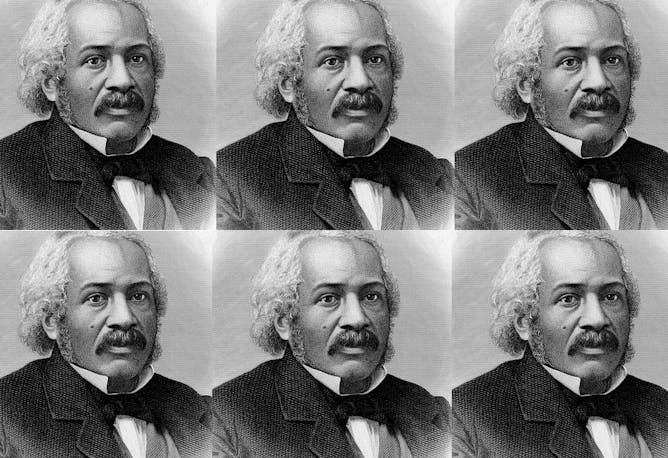|
|
|
|
Pedants beware. After Professor of Linguistics Willem Hollman wrote a piece for The Conversation last month about teaching grammar to eight-year-olds, he was invited to debate – on national radio – the merits of standard English against an author and private tutor described by presenter Nick Robinson as a “stickler for the right sort of grammar”. A lively exchange ensued and, like many educational linguists, Hollman argued that standard English should not be presented, within the national curriculum, as the only correct form.
In a follow-up article Hollman now takes the sword to five pedantic myths about standard English, from the belief that it is the only variety with clear rules to the misguided idea that you need it to think straight.
Elsewhere, a medical science historian recounts the life of James McCune Smith – the first African American physician known to have been published in a British medical journal and an indomitable abolitionist. And a zoologist’s notebooks – and new intel on hippos’ jaws – are saved from the skip to reveal why male hippos have bigger tusks than the females.
|

|
Dale Berning Sawa
Acting commissioning editor, Cities and Young People
|
|

Teaching grammar and validating each child’s dialect are not mutually exclusive positions for a teacher to take.
Marc Hill / Alamy Stock Photo
Willem Hollmann, Lancaster University
Standard English is but one of a myriad ways of speaking the English language. No child should be penalised for speaking another
|

Engraving of James McCune Smith by Patrick H. Reason.
New York Historical Society
Matthew Daniel Eddy, Durham University
James McCune Smith was the first African American to receive a medical doctorate from a university. He dedicated his life to fighting injustice.
|

Courtship behaviour of a male and female hippopotamus in Amboseli National Park, Kenya, showing the larger head and tusk sizes of the adult male on left.
Graeme Shannon
Graeme Shannon, Bangor University; Line Cordes, Bangor University
Data collected from thousands of hippos helped show that while males are only slightly bigger than females, they have much larger tusks.
|
Politics + Society
|
-
Leor Zmigrod, University of Cambridge
The threat of disease changes how people behave to minimise the risk of infection – and can even influence their political preferences.
-
Tom Smith, University of Portsmouth
How Maria Ressa grew a Facebook page into the Philippines’ most credible independent news services in the face of government intimidation.
-
Ilya Yablokov, University of Sheffield
Muratov’s Nobel will be a boon to Russian investigative journalism.
-
Simon Mabon, Lancaster University
Recent meetings have raised hopes that the two regional powers can bury their differences and end this humanitarian disaster.
|
|
Health + Medicine
|
-
Christian Yates, University of Bath
The reason for these results has yet to be confirmed – but maths may explain the phenomenon.
-
Suzanne McDonough, RCSI University of Medicine and Health Sciences; Joanne Marley, Ulster University; Michael Thacker, RCSI University of Medicine and Health Sciences
If the pandemic made your back feel more sore than usual, moving more everyday may be important to help improve it.
|
|
Environment + Energy
|
-
Cristina Stewart, University of Oxford
But the national goal of cutting meat intake by 30% over the next ten years is likely to be missed.
-
Jun Du, Aston University
Xi Jinping has been talking tough on decarbonising China, but blinked after an energy crisis threatened to derail the world economy.
|
|
Business + Economy
|
-
Tom Stacey, Anglia Ruskin University; Ying Xie, Anglia Ruskin University
Short fixes won’t last.
-
Nigel Driffield, Warwick Business School, University of Warwick
Current wage rises will be short term, and expensive for consumers.
|
|
Arts + Culture
|
-
Panya Banjoko, Nottingham Trent University
Nottingham Black Archive is recovering the stories of those who made important contributions to the national story of Black British history. The UK needs more like it.
|
|
Science + Technology
|
-
Jeremy Smith, University of South Wales
Some bird species travel thousands of miles every year as part of their annual migratory journeys.
|
|
| |
Featured events
|

|
— Online, University of Southampton, Southampton, Southampton, SO17 1BJ, United Kingdom of Great Britain and Northern Ireland — University of Southampton
|

|
— Online, Oxford, Oxfordshire, N/A, United Kingdom of Great Britain and Northern Ireland — University of Oxford
|

|
— Online, Southampton, Southampton, SO17 1BJ, United Kingdom of Great Britain and Northern Ireland — University of Southampton
|

|
— The Open University, Walton Hall, Buckinghamshire, MK7 6AA, United Kingdom of Great Britain and Northern Ireland — The Open University
|
|
|
|
| |
| |
| |
| |
| |
|
|
|
|
|
|
|